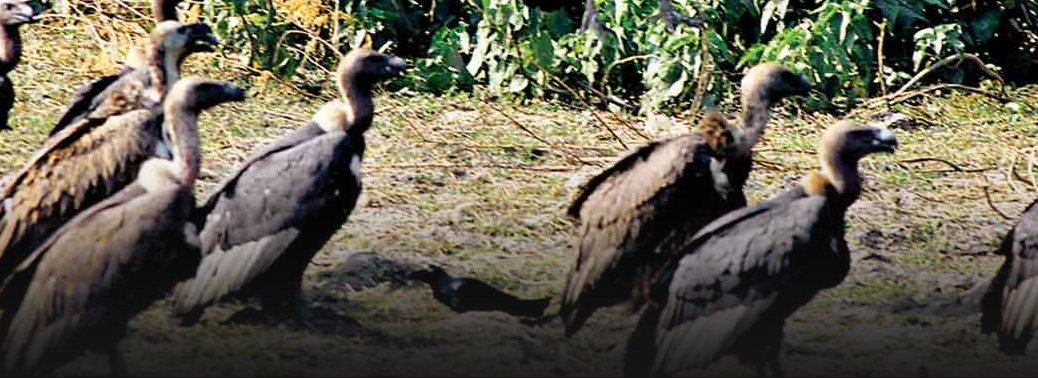VULTURE NESTS IN MUDUMALAI DECLINE
27, Mar 2019

Prelims level : Environment & Biodiversity – Animal Species
Mains level : GS III - Conservation, environmental pollution and degradation, environmental impact assessment
- The number of vulture nests built during the breeding season in the Mudumalai Tiger Reserve has dropped drastically, from 47 active nests in 2018 to just over 30 this year.
- The findings were made during a joint exercise by the Forest Departments of the Mudumalai Tiger Reserve (MTR) and Sathyamangalam Tiger Reserve (STR) to estimate the vulture population in the Sigur plateau, and to ascertain whether the breeding season for the critically endangered species of birds has been successful.
Vulture Conservation
- India has nine species of vultures in the wild. These are:
- Oriental White-backed Vulture (Gypsbengalensis), Slender billed Vulture (Gyps tenuirostris),
- Long billed Vulture (Gyps indicus), Egyptian Vulture (Neophron percnopterus), Red Headed Vulture (Sarcogyps calvus), Indian Griffon Vulture (Gyps fulvus), Himalayan Griffon (Gyps himalayensis),
- Cinereous Vulture (Aegypius monachus) and
- Bearded Vulture or Lammergeier (Gypaetus barbatus). The population of three species i.e.
-
- White-backed Vulture,
- Slender billed Vulture and
- Long billed Vulture in the wild has declined drastically over the past
- Because of the evidence of widespread and rapid population decline, all three vulture
-
- species were listed by IUCN in 2000 as ‘Critically Endangered’.
- Experiments showed that captive vultures are highly susceptible to Diclofenac, and are killed by kidney failure leading to gout within a short time of feeding on the carcass of an animal treated with the normal veterinary dose.
- There have been major initiatives for complete ban on the use of Diclofenac and finding a suitable substitute for the same.
- The Supreme Court has also given instructions for phasing out of Diclofenac.
Mudumalai Tiger Reserve
- Mudumalai Tiger Reserve (MTR) is situated at the tri-junction of Tamil Nadu, Karnataka and Kerala.
- The reserve straddles the Ooty -Mysore interstate national highway.
- It is contiguous with Wyanaad Wildlife Sanctuary on the west, Bandipur Tiger Reserve on the north.
- The Moyar river flows downstream into the Mudumalai Tiger Reserve and is the natural line of division between Mudumalai and Bandipur Sanctuary.
- The MTR also forms part of the Nilgiri Biosphere Reserve
- The Reserve has tall grasses, commonly referred to as “Elephant Grass”, Bamboos of the
- giant variety, valuable timber species like Teak, Rosewood.
- Fauna found in the region are Tiger, Elephant, Indian Gaur, Panther, Barking Deer, Malabar Giant Squirrel and Hyena etc.,
- Sathayamangalam,Kalakkad Mudunthurai and Anamalai are the other tiger reserves in the state of Tamil Nadu.
Sathyamangalam Wildlife Sanctuary and Tiger Reserve (STR)
- Sathyamangalam Wildlife Sanctuary and Tiger Reserve is a protected area and Tiger Reserve along the Western Ghats in the Indian state of Tamil Nadu.
- Largest among the four tiger reserves (Kalakad-Mundanthurai, Anamalai, Mudumalai and Sathyamangalam) in Tamil Nadu, STR is a significant wildlife corridor in the Nilgiri Biosphere Reserve between the Western Ghats and the rest of the Eastern Ghats, serving as a genetic link to contiguous protected areas including the Billigiriranga Swamy Temple Wildlife Sanctuary, Sigur Plateau, Mudumalai National Park and Bandipur National Park.
Sigur Plateau
- Sigur Plateau is a plateau in the north and east of Nilgiri District in the Nilgiri Hills of Tamil Nadu, South India.
- It covers the 778.8 square kilometres (300.7 sq mi) portion of the Moyar River drainage basin on the northern slopes of the Nilgiri Hills, south of the Moyar River.






